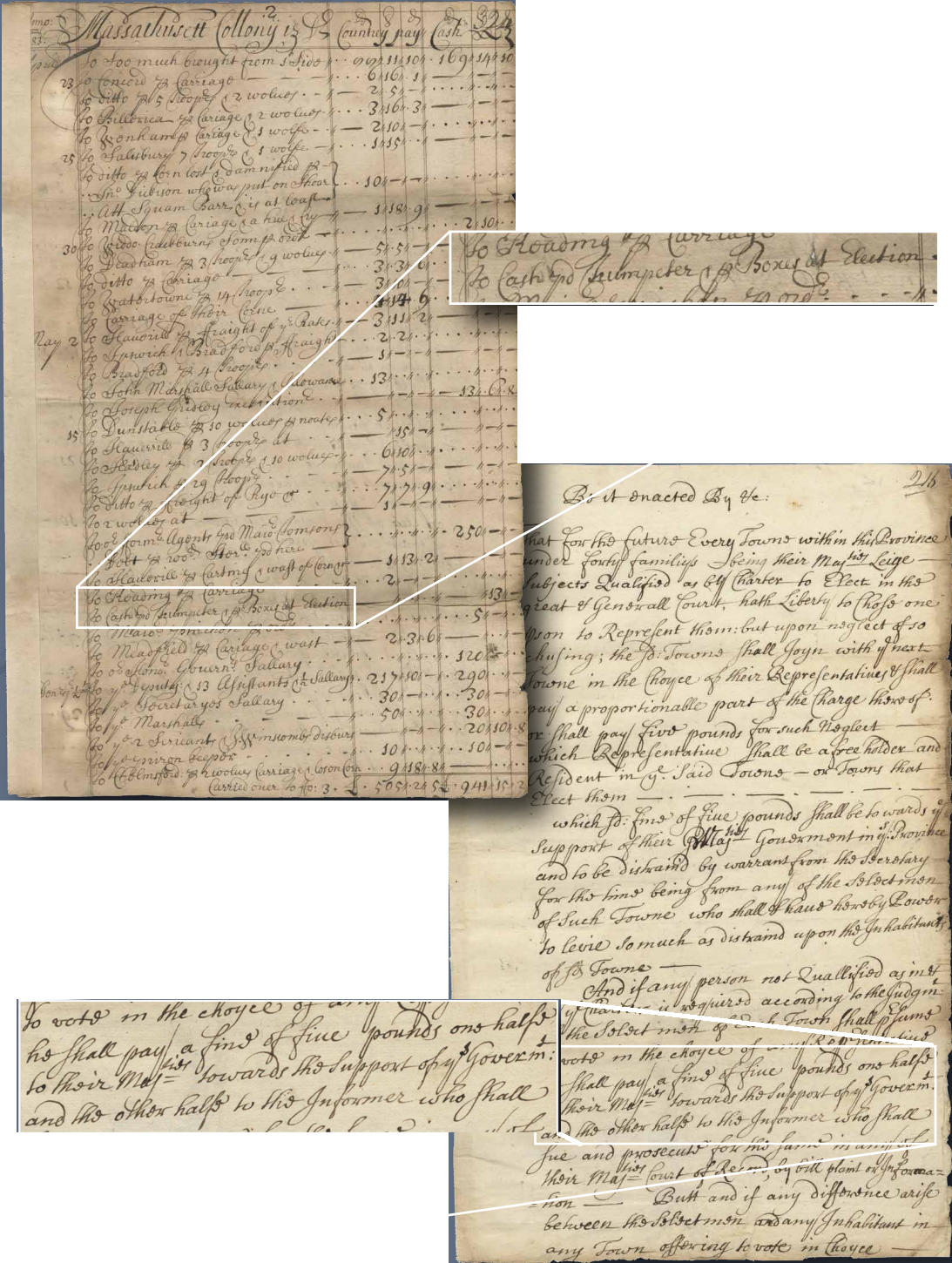“By wrighting the names of the person Elected, in paper open, or folded, not twisted or rowled up.”
Instructions for election of officers, including Governor, 1647
”Although the celebration of Christmas was banned in the Massachusetts Bay Colony, Election Day was a holiday.
Not for Everyone
Some English Puritans, seeking religious freedom for themselves, fled to Massachusetts and insisted on regular elections to choose their own leaders. Adult male church members could vote without property qualifications. While Africans, women, Quakers, Baptists, Jews, and Catholics were left out (along with most Native people), the custom of regular elections took root in Massachusetts.
John Winthrop
How They Voted
Voice voting was common (“yea
or nay”). In some elections
kernels of corn or beans were
dropped in a basket to signify the
voter’s choice. A real innovation
came in 1634, when voters
were allowed to write
a candidate’s name for
governor on a piece
of paper. (This was possible because early
Massachusetts had a higher literacy rate than
other English colonies.) In 1647, a written
vote for some offices was codified into law.
What’s in a word: Ballot
Hingham’s Old Ship Church
Top left: Election Day
Bottom Right: Election Fraud, circa 1693

